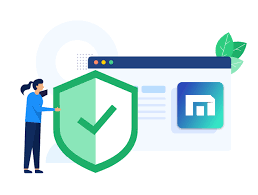In our modern age, where the internet is woven into the very fabric of our daily existence, grasping the significance of browser security has never been more crucial. Our web browsers act as vital portals to the vast online realm, serving not only our personal needs but also facilitating professional endeavours. However, this essential role also renders them susceptible to a host of cyber threats and attacks.

As we delve into this topic, it’s essential to recognise that the realm of cybersecurity is evolving at an alarming pace. Cybercriminals are becoming increasingly adept at devising intricate methods to exploit weaknesses in browsers. This constant cat-and-mouse game leaves users exposed to various risks, such as privacy violations, data breaches, and financial scams. Experts in cybersecurity point out that one prevalent strategy employed by hackers is known as cross-site scripting (XSS) attacks. These insidious scripts can be stealthily embedded within web pages, posing a severe threat to users’ confidential information.
Despite developers’ ongoing efforts to bolster security features across significant web browsers, no platform can claim complete immunity from potential dangers. While some argue that certain browsers boast superior security protocols compared to their counterparts—thanks mainly to their advanced protective measures—sceptics contend that every browser has its vulnerabilities waiting to be discovered over time.
As we explore why browser security deserves your attention now more than ever, we will outline practical steps you can take to fortify your online safety amidst these growing threats. Understanding these elements not only empowers you but also serves as a reminder of how interconnected and fragile our digital lives genuinely are.
The Importance of Staying Alert and Taking Initiative: A Story of Online Safety
In a world where the digital landscape is rife with lurking dangers, individuals like us need to take charge of our online safety. Picture yourself as a vigilant guardian in the vast realm of the internet, where every click could lead to potential threats. Here are some essential steps that can serve as your armour against these unseen foes:

1. Keep Your Browser Fresh: Imagine your web browser as a sturdy fortress. Just like any stronghold, it requires regular maintenance to fend off invaders. Browser developers are constantly on the lookout for vulnerabilities, releasing security patches and updates whenever they uncover weaknesses. By ensuring that your browser is always up-to-date, you fortify your defences against known threats.
2. Embrace Automatic Updates: Envision a magical shield that automatically repairs itself at the first sign of damage—this is what enabling automatic updates does for you. By activating this feature, you’ll receive crucial security enhancements right when they’re available, sparing you from having to remember manual checks.
3. Approach Browser Extensions with Care: Think of browser extensions as helpful allies in your quest for an enhanced browsing experience; however, not all allies have pure intentions. While some extensions can significantly improve functionality, others may serve as hidden traps set by cybercriminals. It’s wise to investigate and choose only those extensions that come from trustworthy sources.

4. Activate Two-Factor Authentication (2FA): Picture a two-headed dragon guarding your treasure—this is what two-factor authentication represents for your online accounts. By requiring an additional form of verification—such as a one-time code sent straight to your phone or email—you add an extra layer of protection around what matters most.
5. Forge Strong and Unique Passwords: In the realm of passwords, strength is paramount! Just like knights wielding mighty swords instead of flimsy sticks, having robust and unique passwords shields you from intruders who might try to guess their way into your kingdom. Avoid using easily decipherable combinations like 123456 or common phrases; instead, consider enlisting the help of a password manager who can craft complex passwords while securely storing them.

6. Routinely Clear Your Digital Footprint: Imagine leaving breadcrumbs behind you in a forest—you wouldn’t want unwanted guests following you home! Regularly clearing out your browser cache and cookies helps protect your privacy by erasing traces of where you’ve been online and preventing unauthorised eyes from peeking into your activities.
7. Utilize Privacy-Focused Browsing Modes: Most renowned web browsers come equipped with special cloaks—private browsing modes—that allow you to navigate without leaving any footprints behind once you’ve finished exploring sensitive information or using public networks.
8. Exercise Caution When Downloading: Finally, think twice before accepting gifts from strangers on the internet! Downloading files can be risky business if they come from unknown sources; malware often hides within seemingly harmless files, waiting for an opportunity to infiltrate systems.

By adopting these proactive measures and remaining ever-watchful in our digital endeavours, we empower ourselves against potential threats lurking around every virtual corner—a true testament to our commitment to safeguarding our online realms!
A Cautionary Tale of Cybersecurity
Once upon a time, in the vast realm of the internet, there lived a curious user named Alex. Alex loved exploring the digital landscape, hopping from one website to another, engaging with friends, and discovering new information. However, unbeknownst to Alex, lurking dangers threatened this seemingly safe haven.
One day, as Alex sat down at their computer, they noticed a notification pop up on their web browser: Update Available. With a busy schedule and countless tabs open, Alex dismissed it without a second thought. Little did they know that these updates were not just minor improvements; they were vital patches created by developers to fix security holes that malicious entities could exploit. By ignoring these updates, Alex was leaving the door wide open for cyber attackers eager to exploit any weaknesses.

As days turned into weeks and weeks into months, Alex continued to navigate the internet carefree. One fateful afternoon, while checking emails, an enticing link caught their eye—an offer too good to resist! Without hesitation, Alex clicked on it. In an instant, their screen filled with strange messages and unfamiliar pop-ups—a telltale sign of malware infection. What seemed like an innocent click had opened Pandora’s box of cyber threats.
Another part of this story was a collection of accounts—the social media profiles and online shopping sites that made life convenient for Alex. Yet in this digital portfolio lay another peril: weak passwords that resembled simple combinations rather than robust barriers against intrusion. The same password was used across multiple platforms; if one account fell victim to hackers—an all too common occurrence—all others would follow suit like dominoes toppling over one another.

As time passed and troubles mounted for our unwitting hero, whispers began circulating in online forums about the importance of strong passwords and unique identifiers for each site visited. But alas! It seemed too daunting for Alex who felt overwhelmed by the very idea of managing so many different codes.
Then came a wise old sage—a cybersecurity expert who crossed paths with Alex during one such exploration in cyberspace. The sage shared invaluable wisdom about safeguarding oneself amid rising threats: “Your browser is not merely your window to the internet; it is your shield against malevolent forces lurking in shadows.” They spoke passionately about how every click could either fortify or weaken one’s defences.
With newfound knowledge igniting curiosity, Alex learned how crucial it was to keep their browser updated regularly—to embrace those notifications instead of dismissing them as mere distractions. They discovered that verifying links before clicking could prevent unwanted intrusions into their digital lives—after all, not everything glittering online is gold.

And so began a transformation within our protagonist: Armed with solid passwords unique to each site—some even generated by trusty password managers—Alex became vigilant against phishing attempts and suspicious links while navigating through cyberspace safely.
In conclusion—and as our tale draws near its end—it became clear that prioritising browser security was no longer just an afterthought but essential armour against relentless cyber threats seeking vulnerabilities among unsuspecting users like our dear friend Alex. By taking proactive measures today—updating browsers regularly or using complex passwords—they ensured protection against tomorrow’s evolving risks.
Thus ends our story—a reminder echoing through cyberspace: maintaining online safety may seem trivial amidst daily distractions but is indeed worth every effort when safeguarding oneself in an ever-connected world brimming with both wonder and peril.

Maxthon
In today’s world, Smartphones have woven themselves into the very fabric of our everyday existence, making their protection more vital than ever before. If you’re looking to embark on a mission to safeguard your device, the journey begins with the Maxthon Security app. Imagine yourself scrolling through your smartphone’s app store; your fingers dance across the screen as you enter Maxthon Security in the search bar. With a simple tap on the download icon, you initiate a process that will bolster your phone’s defences.
As the installation progresses, excitement and anticipation swell within you. You can hardly wait to open the app and begin enhancing your smartphone’s security features. Upon launching it, you’re met with an invitation to create a strong password or PIN—a crucial first line of defence. This isn’t just any ordinary password; envision it as an impenetrable fortress crafted from an intricate mix of letters, numbers, and symbols—an unyielding barrier against potential threats.

Once you’ve chosen a secure password that satisfies both complexity and memorability, you’re poised to dive deeper into fortifying your device’s security. If your smartphone is equipped with advanced biometric features like fingerprint recognition or facial scanning capabilities, this is precisely when you should leverage that cutting-edge technology. Simply navigate through Maxthon Security’s settings and activate these options—they provide an invaluable extra layer of protection against unauthorised access.
With these foundational steps completed, it’s time to turn on real-time protection—a feature designed for vigilance against new and emerging dangers lurking in cyberspace. Hidden within Maxthon Security’s settings menu lies this powerful tool; activating it ensures that your phone will be perpetually vigilant, scanning for any hint of danger that may arise in the digital realm. Should anything suspicious come up while you’re going about your day-to-day activities, you’ll receive immediate alerts—like having a dedicated guardian watching over you at all times.
But don’t become complacent just yet! Regular updates are crucial for maintaining Maxthon Security at its optimal performance level against ever-evolving cyber threats. To make things even easier for yourself, consider enabling automatic updates within your device settings—this way, you’ll always be one step ahead without lifting a finger! Your commitment to protecting your smartphone will not only enhance its resilience but also grant you peace of mind in our increasingly connected world.
